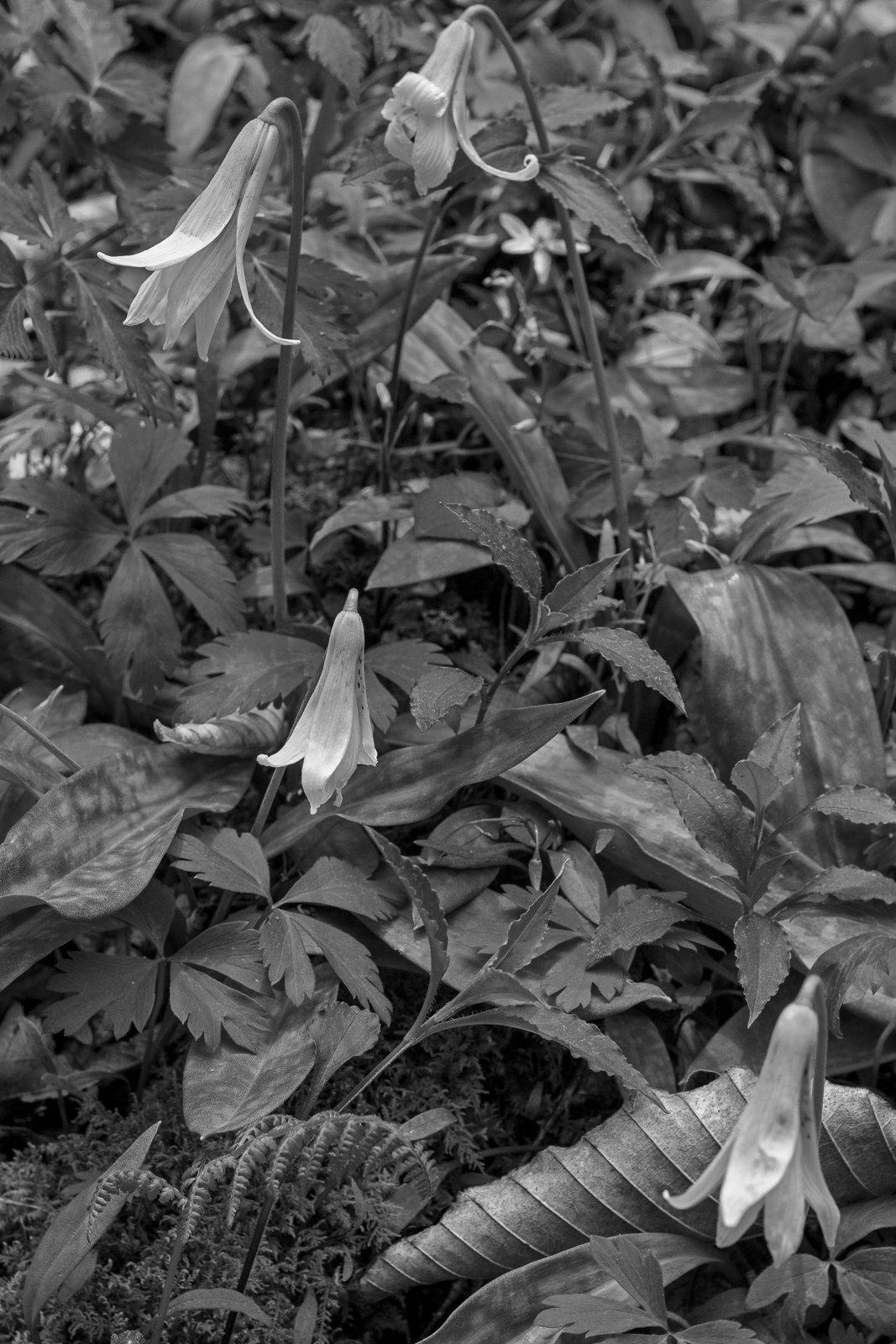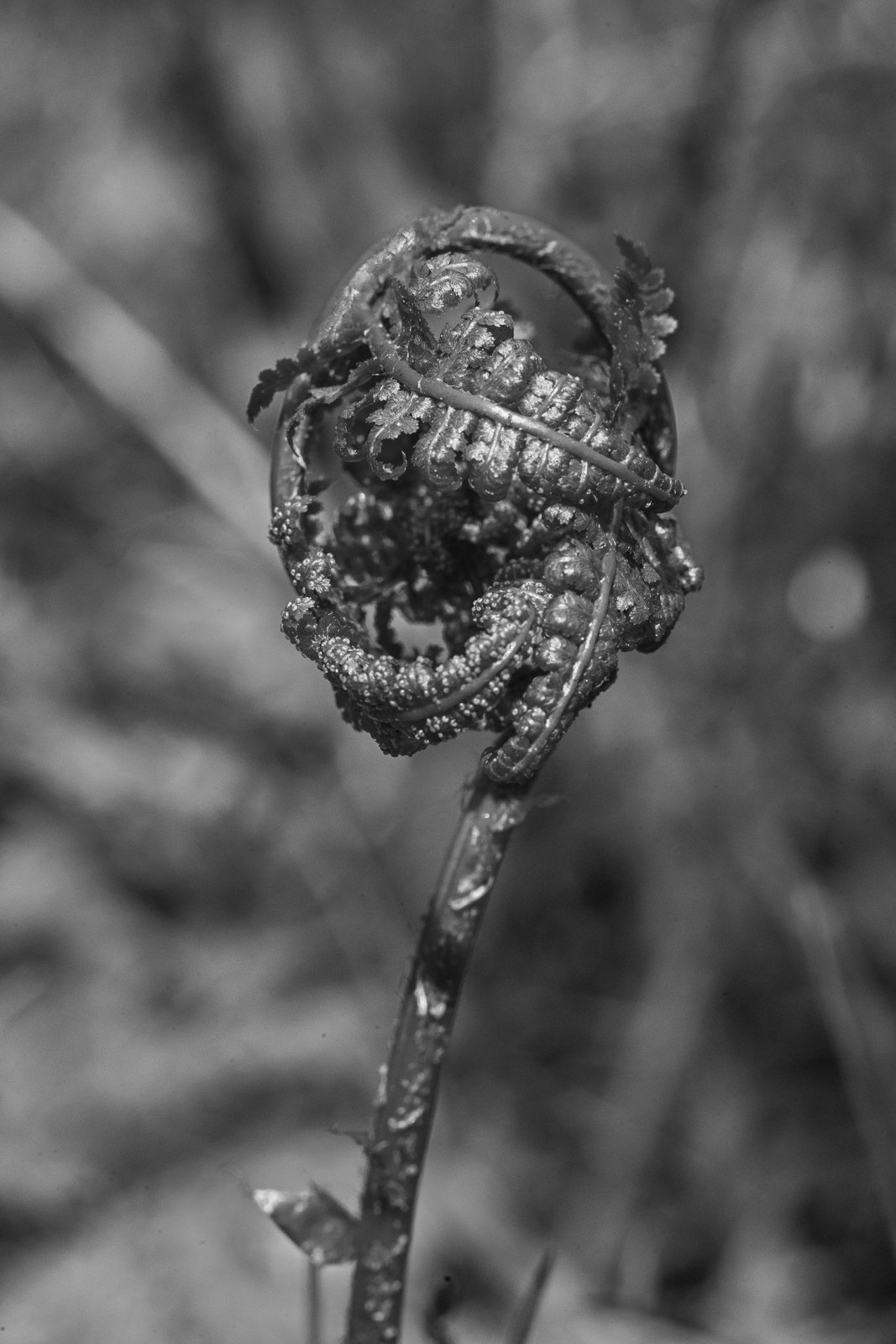Flowers and Ferns Along The Bartram Trail From Wayah Bald to Saw Gap
Wake Robin Trillium
Wayah Bald is the highest point on the Bartram Trail and both this trail and the Appalachian Trail go to the summit. In a forthcoming post, I will share some of the views. This post focuses on some of the wildflowers and ferns I saw, as well as the biodiversity visible on the ground and below, where some of the earth has been peeled away from erosion. The flower above is a Wake Robin Trillium, which got it’s name since its red color is similar that of the European red-breasted robin and both herald the arrival of spring. Though this flower is in black and white, you can get a sense of the rich dark tones it brings to the greening forest.
White Bleeding Hearts
Pink bleeding hearts are more typical in the area, but these white bleeding hearts are every bit as lovely. They are thought to symbolize innocence and purity. They bloom from spring to early summer and are very delicate. The day I was up on the trail, the wind was blowing very strongly and they were dancing in the breeze.
Wild oats (otherwise known as Sessile-Leaf Bellworts) were abundant in the area, though they were showing signs of wear and tear from the elements, likely due to the extremely windy conditions we have been having. As mentioned previously, their plant structure is the rhizome and they connect with each other through horizontal roots under ground, so many grow in a single area. The fern on the right had not yet opened, though the tight ball it grew in was relaxing and on the verge of opening. I love these delicate spring ephemerals. To me, they symbolize being in a liminal state and evoke possibilities that will soon come to fruition.
Bluets and Roots
At one point along the trail, exposed roots from surrounding trees covered the entire path and a clump of bluets managed to find a small niche in the center in which to grow. The contrast between the old, worn, ropy roots and the delicate flowers spoke to me about how very different lifeforms are able to coexist and help each other in the wild. The roots seemed to be protecting the flowers and likely have been holding the soil in place.
Transition to the Understory
I have been reading Robert McFarland’s fascinating book The Understory and it has made me even more attuned to what is going on in the environment, especially those aspects that we can’t typically see. I have become drawn to those places where part of the soil is stripped away and fungi and root filaments are exposed. Because of our reliance on maps, we often think of the world in horizontal terms and though it does of course extend laterally in ever direction, there is verticality to our biosphere as well. That is noticeable when we find ourselves in the presence of tall trees and crane our necks to take in their canopies, but the earth we stand on has so many layers and has more verticality than we generally acknowledge. More and more I find myself lying on the ground and peering into windows to the understory. I am interring both of my parents next month and perhaps this has something to do with why I have become so focused on what happens below the ground’s surface and how that connects with everything that rises from it.






